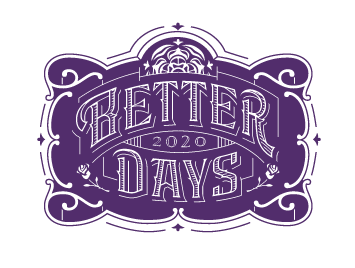Answering Questions About Voting Firsts
By Katherine Kitterman
Better Days 2020 Historical Director
Our mission at Better Days 2020 is to share the stories of Utah women – who were the first women to vote in the modern United States! We’re pretty proud of that fact, so let’s take a closer look at where Utah’s women voters fit in the nation’s history.
Utah’s first female voter was Seraph Young, a twenty-three year old schoolteacher who cast her historic ballot in Salt Lake City’s Council Hall on her way to work on February 14, 1870. This made her the first woman to vote in the modern United States.
Many people have a question when they learn about Seraph: what about Wyoming? Some people know that Wyoming Territory was the first to grant women’s suffrage, in December 1869. What they don’t often know is that Utah Territory followed three months later, in February 1870.[1] Utah held two elections where women were allowed to vote before Wyoming had its first, so that meant Utah women were the first to exercise their voting rights. This happened in Salt Lake City’s municipal election on Valentine’s Day 1870, when Seraph Young and about 25 other women voted a few days after women’s suffrage had become law. Later that year, around two thousand women voted in Utah’s territorial election held on August 1.[2]
“Women at the Polls in New Jersey in the Good Old Times,” Harper’s Weekly, November 13, 1880.
1870 marked women’s first vote under suffrage laws that we would recognize today, but it wasn’t the first time women had ever voted in what would become the United States.[3] Back in 1776, during the American Revolution, New Jersey ratified a constitution extending voting rights to all adult residents who owned property worth £50. Because New Jersey didn’t enact race or gender restrictions on voting rights, this law enfranchised a small number of free black men and unmarried and widowed women (married women could not legally own property) who owned enough to meet the property requirement. When the U.S. Constitution was ratified in 1787, states had the power to regulate their own voting laws.
New Jersey passed laws in the 1790s explicitly stating that women could vote, but the state legislature later restricted suffrage to free white males who were taxpayers in 1807. This disfranchised the women and African Americans who had previously been able to vote. Women wouldn’t vote in statewide (or territory-wide) elections again until Utah women did so on August 1, 1870.
Early American women played indispensable roles in their communities and their nation, but it took more than a century for male lawmakers to entrust them with voting rights on a nationwide scale. Change initially came at the state and local levels, moving slowly from west to east. By the Civil War, some women had gained a limited right to vote in local school elections in Kentucky (1837) and Kansas (1861). The pace didn’t quicken after the Civil War, despite suffrage organizations’ nationwide campaigns for votes for women.
Even by 1896, after Utah women had lost their voting rights through Congressional legislation in 1887 and successfully regained suffrage in the new state constitution, Wyoming and Colorado were the only other states where women could vote.[4] By 1910, there were five. By the time the 19th Amendment was ratified in 1920, after a more than 70-year struggle, Utah women had been voting for a total of 41 years.
Illustration by Brooke Smart
Still, the victory of 1920 didn’t mean that all women in Utah or the rest of the nation could vote. While women couldn’t be kept from the polls simply because they were women, Native Americans and immigrants were barred from citizenship (a requirement for voting). Legal barriers enacted in many states made it effectively impossible for African Americans to vote. While many of these barriers have been removed, the work continues to protect women’s rights and minority rights in Utah and throughout the nation.
You can learn more about Utah women’s work for suffrage and civil rights for all people at www.utahwomenshistory.org.
Further Reading:
· “Gaining, Losing, and Winning Back the Vote: The Story of Utah Women’s Suffrage”


